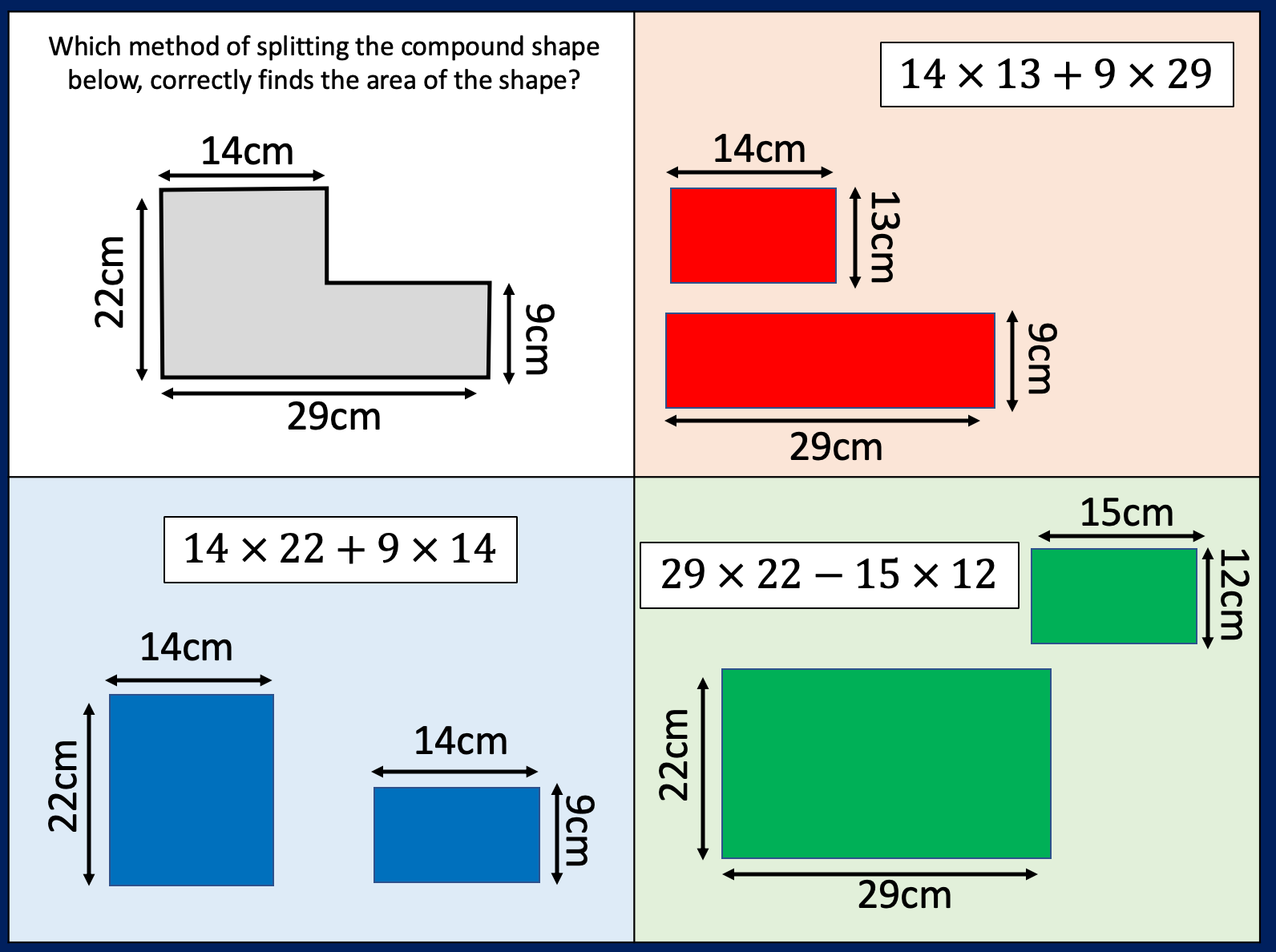I have started working on finding the area of 2D shapes with year 9 and I wanted them to see the connections with the area of a rectangle. Firstly because they are most confident with that shape but mostly because when given a formula they don’t remember the considerations that need to be made. For example; if they learn area of a triangle is 1/2 x b x h they don’t remember that you can’t just take 2 of the lengths as ‘b’ and ‘h’ unless they are the two lengths connected by a right angle.
Show a class an equilateral triangle with sides 6cm and if they calculate 1/2 x 6 x 6 then its time to reinforce the idea of a triangle being half a rectangle.
I plan to show my class the following images and ask them to find which shapes are half the rectangle, which are more and which are less.

Then i plan to get students to try and derive the areas of triangles, parallelograms, kites and ultimately trapeziums from the rectangle. I have used a rectangle that i cut and reform to show this too.
I have found with compound area involving rectangles that i give the same problem but split it differently each time. I ask the class to find the area of each and if they notice they are all the same shape each time then see if they can prove it 3 different ways.

UPDATE!

I was pleased that students imagined pieces moving or cut the shapes up in order to see if the shaded part was more, less or equal to a half.
We then derived the areas of other 2D shapes from the area of a rectangle.


UPDATE!
I made another similar task
Students have to group the shapes so that the shapes in each group have the same area as one another.

UPDATE:
I’ve been rethinking some questions for 2D shapes. I want Ss to consider whether they should split or form a rectangle to find the area of compound shapes







combining two shapes for the same area









Excellent and very challenging
LikeLiked by 1 person